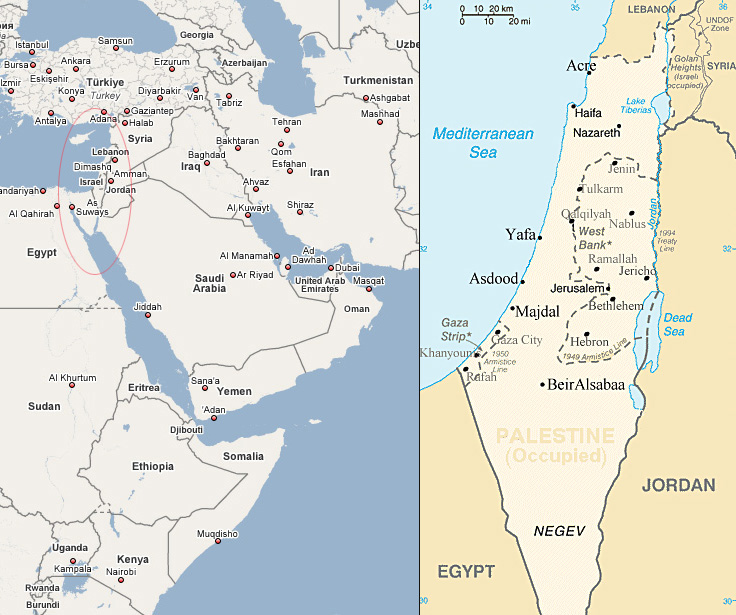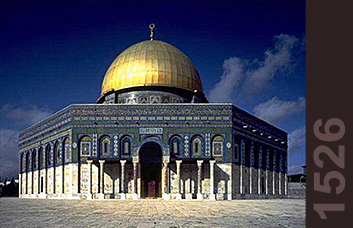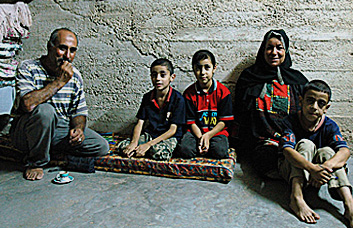


1
2
3
4
5
6
8
9
10
11
12
13
14
15
16
17
18
19
20
21
22
23
24
25
26
27
28
29
30
31
32
33
34
35
36
37
38
39
40
41
42
43
44
45
46
47
48
49
50
51
52
53
54
55
56
57
58
59
60
61
62
63
64
65
66
67
68
69
70
71
72
73
74
75
76
77
78
79
80
81
82
83
84
85
86
87
88
89
90



จากภูมิศาสตร์ปาเลสไตน์
ถึงผู้คนปาเลสติเนียน (สารานุกรม)
ประวัติศาสตร์อันซับซ้อนและซ้อนทับของปาเลสไตน์
สมเกียรติ
ตั้งนโม : เรียบเรียง
โครงการสื่อเพื่อบริบทสิทธิมนุษยชน มหาวิทยาลัยเที่ยงคืน
บทความวิชาการต่อไปนี้เป็นส่วนหนึ่งของโครงการสื่อเพื่อบริบทสิทธิมนุษยชน
ของเว็บไซต์มหาวิทยาลัยเที่ยงคืน ซึ่งเป็นโครงการที่ไม่หวังผลกำไร
โดยมีวัตถุประสงค์เพื่อแสวงหาตัวอย่างและกรณีศึกษาเกี่ยวกับเรื่องสิทธิมนุษยชน
จากประเทศชายขอบทั่วโลก มาเป็นตัวแบบในการวิเคราะห์และสังเคราะห์
เพื่อเผชิญกับปัญหาสิทธิมนุษยชน(สิทธิชุมชน)ในประเทศไทย
ในคริสตศตวรรษที่ ๒๐
- ๒๑ ดินแดนปาเลสไตน์กลายเป็นพื้นที่ของความขัดแย้ง
ระหว่างชาวยิวและขบวนการแห่งชาติอาหรับต่างๆ. อาณาบริเวณนี้เป็นดินแดนศักด์สิทธิ์
ของลัทธิจูดาห์, คริสต์ศาสนา, และศาสนาอิสลาม มีการตั้งรกรากนับจากช่วงต้นก่อนประวัติศาสตร์
ส่วนใหญ่แล้วอาศัยอยู่โดยกลุ่มชนตะวันออกกลางโบราณ(อาหรับ ฮิบรู ยิว ฯลฯ) ปัจจุบัน
ดินแดนแห่งนี้
ยังคงเต็มไปด้วยความขัดแย้ง บทความเรียบเรียงชิ้นนี้เป็นความพยายามที่จะทำความเข้าใจ
ความเป็นมาเชิงประวัติศาสตร์เกี่ยวกับอาณาบริเวณดังกล่าวโดยสังเขป โดยมีหัวข้อสำคัญดังต่อไปนี้
- Palestine - ความรู้ทั่วไปเกี่ยวกับปาเลสไตน์
- Palestine : ข้อมูลจาก Britannica Concise Encyclopedia:
- Palestine: ข้อมูลจาก Columbia Encyclopedia:
- ประวัติศาสตร์ : ปาเลสไตน์โบราณ (Ancient Palestine)
- ศาสนาคริสต์และศาสนาอิสลาม (Christianity and Islam)
- ภายใต้การปกครองเตอร์กิช (Turkish Rule)
- ความขัดแย้งของอาหรับกับไซออนนิสท์ (Conflict between Arabs and Zionists)
- ภาคผนวก: Palestine จาก Columbia Encyclopedia: (ภาษาอังกฤษ)
midnightuniv(at)gmail.com
บทความเพื่อประโยชน์ทางการศึกษา
ข้อความที่ปรากฏบนเว็บเพจนี้ ได้รักษาเนื้อความตามต้นฉบับเดิมมากที่สุด
เพื่อนำเสนอเนื้อหาตามที่ผู้เขียนต้องการสื่อ กองบรรณาธิการเพียงตรวจสอบตัวสะกด
และปรับปรุงบางส่วนเพื่อความเหมาะสมสำหรับการเผยแพร่ รวมทั้งได้เว้นวรรค
ย่อหน้าใหม่ และจัดทำหัวข้อเพิ่มเติมสำหรับการค้นคว้าทางวิชาการ
บทความมหาวิทยาลัยเที่ยงคืน
ลำดับที่ ๑๕๒๖
เผยแพร่บนเว็บไซต์นี้ครั้งแรกเมื่อวันที่
๘ เมษายน ๒๕๕๑
(บทความทั้งหมดยาวประมาณ
๑๘ หน้ากระดาษ A4)
++++++++++++++++++++++++++++++++++++++++++++++++++
จากภูมิศาสตร์ปาเลสไตน์
ถึงผู้คนปาเลสติเนียน (สารานุกรม)
ประวัติศาสตร์อันซับซ้อนและซ้อนทับของปาเลสไตน์
สมเกียรติ
ตั้งนโม : เรียบเรียง
โครงการสื่อเพื่อบริบทสิทธิมนุษยชน มหาวิทยาลัยเที่ยงคืน

(ภาพซ้าย) แผนที่ตะวันออกกลาง, (ภาพขวา)แผนที่ดินแดนปาเลสไตน์
นิยาม-ความหมาย
palestine จากพจนานุกรม Webster ได้ให้นิยามว่า
1. ปาเลสไตน์เป็นดินแดนเก่าแก่ของเอเชียตะวันตกเฉียงใต้ ซึ่งตั้งอยู่บนชายฝั่งตะวันออกของทะเลเมดิเตอร์เรเนียน
และขยายไปถึงฝั่งตะวันออกของแม่น้ำจอร์แดน
2. ดินแดนที่ตั้งอยู่ในบริเวณทะเลเมดิเตอร์เรเนียนตะวันตก และทะเลสาบเดดซีตะวันออก; เป็นส่วนหนึ่งของจักรวรรดิออตโตมาน ปี ค.ศ.1516-1917, และตกอยู่ใต้อาณัติปกครองของสหราชอาณาจักร ปี ค.ศ.1923-1948; ซึ่งปัจจุบันครอบคลุมอิสราเอลและเวสท์แบงค์ (ดูแผนที่ประกอบ)
Palestine - ความรู้ทั่วไปเกี่ยวกับปาเลสไตน์
ปาเลสไตน์ คืออาณาบริเวณประวัติศาสตร์ด้านตะวันตกเฉียงใต้ของเอเชีย อยู่ทางตะวันออกสุดของทะเลเมดิเตอร์เรเนียน
และครอบคลุมดินแดนที่ขยายออกไปถึงอิสราเอลยุคใหม่และเขตเวสท์แบงค์(West Bank).
ในช่วงเวลาก่อนประวัติศาสตร์ ดินแดนแห่งนี้ถูกครอบครองโดยชาวฮิบรู, อียิปต์,
โรมัน, ไบแซนทีน, อาหรับ, และเตอร์ก. สันนิบาตชาติในอาณัติปกครองของสหราชอาณาจักร
(British League of Nations mandate)ได้เข้าสำรวจ จับตามองเรื่องราวเหตุการณ์ต่างๆ
ในภูมิภาคนี้นับจาก 1920 เป็นต้นมา จนกระทั่งปี 1948 เมื่ออิสราเอลประกาศตนเป็นรัฐอิสระที่แยกตัวออกมา
และเขตเวสท์แบงค์ได้ถูกยึดครองและผนวกเข้ามาภายหลังโดยจอร์แดน(1950) และต่อมาถูกยึดครองโดยอิสราเอล(1976)
ในปี 1988 องค์การปลดปล่อยปาเลสไตน์(the Palestine Liberation Organization หรือ PLO) ภายใต้การนำของนายยัสเซอร์ อาราฟัด(Yasir Arafat) ได้ประกาศเจตนารมย์ที่จะก่อตั้งรัฐอาหรับปาเลสไตน์ขึ้น เป็นไปได้ที่จะรวมเอาเขตเวสท์แบงค์, ฉนวนกาซา, และบางส่วนของกรุงเยรูซาเล็มอันเป็นถิ่นที่อยู่ของชนอาหรับเข้ามาด้วย. ชาวปาเลสไตน์บรรลุผลสำเร็จอย่างจำกัดในการปกครองตนเอง ณ ดินแดนฉนวนกาซาและเวสทแบงค์ตามที่ได้มีการลงนามในสนธิสัญญาออสโล(the Oslo accords [1993, 1995]) แต่การเจรจาตกลงได้ยุติลงกลางคันในปี 2000 เมื่อการสู้รบระเบิดขึ้นระหว่างกองกำลังปาเลสไตน์และกองทัพอิสราเอล
Palestine : ข้อมูลจาก
Britannica Concise Encyclopedia:
ในคริสตศตวรรษที่ 20 - 21 ดินแดนปาเลสไตน์กลายเป็นพื้นที่ของความขัดแย้งระหว่างชาวยิวและขบวนการแห่งชาติอาหรับต่างๆ.
อาณาบริเวณนี้เป็นดินแดนศักด์สิทธิ์ของลัทธิจูดาห์, คริสต์ศาสนา, และศาสนาอิสลาม
มีการตั้งรกรากนับจากช่วงต้นก่อนประวัติศาสตร์ ส่วนใหญ่แล้วอาศัยอยู่โดยกลุ่มชนตะวันออกกลางโบราณ(อาหรับ
ฮิบรู ยิว ฯลฯ) เป็นดินแดนที่ถูกครอบครองในยุคพระคัมภีร์โดยอาณาจักรต่างๆ ของอิสราเอล,
จูดาห์, และจูเดีย (*)
(*) - Judah - an ancient
kingdom of southern Palestine with Jerusalem as its center
- Judaea - the southern part of ancient Palestine succeeding the kingdom of
Judah; a Roman province at the time of Christ
ดินแดนแห่งนี้ได้ถูกยึดครองต่อมาโดยพวกที่มีอำนาจต่างๆ ของตะวันออกกลาง ประกอบด้วย
แอสซีเรีย, เปอร์เชีย, โรมัน, ไบแซนทีน, ครูเสดเดอร์, และออตโตมาน. ต่อมาได้ตกอยู่ใต้การปกครองของสหราชอาณาจักรภายใต้สันนิบาตชาติต่างๆ
ในอาณัติ นับจากสิ้นสุดสงครามโลกครั้งที่หนึ่ง (1914 - 18) จนกระทั่งปี ค.ศ.
1948 เมื่อรัฐอิสราเอลได้รับการประกาศขึ้น. กองทหารจากอียิปต์, ทรานสจอร์แดน,
ซีเรีย, และอิรัก ได้เข้าโจมตีในวันต่อมา. กองทหารเหล่านี้ประสบกับความพ่ายแพ้ต่อกองทัพอิสราเอล
Palestine: ข้อมูลจาก
Columbia Encyclopedia: (ดูฉบับอังกฤษประกอบ-ภาคผนวก)
ปาเลสไตน์, ดินแดนประวัติศาสตร์ทางฝั่งตะวันออกของทะเลเมดิเตอร์เรเนียน ในช่วงเวลาที่ผ่านมา
พื้นที่แห่งนี้ประกอบไปด้วย อิสราเอลยุคใหม่, ดินแดนฉนวนกาซา, เขตเวสท์แบงค์,
จอร์แดน, และอียิปต์; บริเวณแห่งนี้ยังถูกรู้จักในฐานะดินแดนอันศักดิ์สิทธิ์(the
Holy Land).
สำหรับคำว่า"ปาเลสไตน์" สืบทอดมาจากศัพท์ที่หมายถึง "ดินแดนของชนปาเลสติเนียน"(land of the Philistines). ส่วนใหญ่ของบทความนี้จะพูดถึงเรื่องภูมิศาสตร์และประวัติศาสตร์ของปาเลสไตน์เป็นหลัก จนกระทั่งองค์การสหประชาชาติได้เข้ามาพัวพันเกี่ยวกับปัญหาปาเลสไตน์ในปี ค.ศ.1947 (2 ปี หลังจากสงครามโลกครั้งที่ 2)
ในพระคัมภีร์ไบเบิล ปาเลสไตน์ได้รับการเรียกขานว่าเคนาน(Canaan) ก่อนที่จะถูกรุกรานโดยโจชัว(Joshua)(*); ชื่อตามปกติของฮิบรูคือ Eretz Israel [land of Israel]. ปาเลสไตน์คือดินแดนอันศักดิ์สิทธิ์ของของชาวยิว ซึ่งเป็นการให้สัญญาแก่พวกเขาโดยพระผู้เป็นเจ้า; เกี่ยวข้องกับคริสเตียนเพราะ ดินแดนแห่งนี้คือฉากชีวิตของจีซัสหรือองค์พระเยซู; เกี่ยวข้องกับชนมุสลิมเพราะพวกเขาคิดถึงอิสลามในฐานะทายาทของลัทธิจูดาห์และคริสตศาสนา และเป็นเพราะเยรูซาเร็มคือสถานที่ซึ่งตามจารีตของมุสลิม เกี่ยวพันกับการขึ้นสู่สรวงสวรรค์ของพระศาสดามุฮัมหมัด. ดินแดนศักดิ์สิทธิ์แห่งนี้มีคุณสมบัติพิเศษเพราะเป็นสถานที่ของการจาริกแสวงบุญ เป็นสถานที่แห่งการสักการะบูชาต่างๆ ที่มีมีส่วนร่วมปันกันในหลายศาสนา, ชนหลากหลายกลุ่ม, ซึ่งส่วนใหญ่เกี่ยวข้องกับเยรูซาเล็ม, เบทชเลเฮม, นาซาเร็ช, และเฮบรอน.
(*)Joshua, Jehoshuah,
or Yehoshua, born in Egypt, was a biblical Israelite leader who succeeded
Moses. His story is told in the Hebrew Bible, chiefly in the books Exodus,
the Numbers, and Joshua. He was one of the twelve spies sent on by Moses to
explore the land of Canaan who would later lead the conquest of that land.
ประวัติศาสตร์ : ปาเลสไตน์โบราณ (Ancient Palestine)
ชนที่อยู่อาศัยซึ่งรับรู้กันในช่วงแรกสุดของดินแดนปาเลสไตน์คือ คนกลุ่มเดียวกันที่อาศัยอยู่ในยุโรป.
โดยในช่วง 4 พันปีก่อนคริสตกาล ปาเลสไตน์เป็นที่อยู่อาศัยของคนเลี้ยงสัตว์และชาวนา.
ในช่วง 3 พันปี ส่วนใหญ่ของเมืองต่างๆ ที่รู้จักกันในประวัติศาสตร์ได้ดำรงอยู่ต่อมาในปัจจุบัน
บริเวณนี้เป็นศูนย์กลางของการค้าของชาวอียิปต์และสินค้าของบาบีโลเนียมาแต่โบราณ.
ระหว่าง 2 พันปีที่ผ่านมา ปาเลสไตน์ได้ถูกครอบครองโดยพวกฮิกสอซ (Hyksos)(*) และโดยชาวอียิปต์.
ต่อมาในช่วงสิ้นสุดของยุคนี้ โมเสสได้นำชาวฮิบรูหนีออกจากอียิปต์ ข้ามภูเขาไซนาย
และเข้ามาสู่ดินแดนปาเลสไตน์
(*) Hyksos, a Semitic people who invaded Egypt and ruled it during the 17th and 16th centuries b.c. They introduced the horse and chariot into Egypt.
ช่วงประมาณ 1200 ปีก่อนคริสตศักราช พวกฟิลิสตีน(Philistines)(*) ได้รุกเข้ามาทางตอนใต้ของดินแดนชายฝั่ง และได้สร้างอาณาจักรที่เรืองอำนาจขึ้น. ชนชาวฮิบรูได้ตกเป็นประชากรของพวกฟิลิสตีน กระทั่ง 1000 ปีก่อนคริสตกาล เมื่ออาณาจักรฮิบรูอิสระ ได้สถาปนาขึ้นมาภายใต้การปกครองของ Saul(**) หลังจากรัชสมัยของพระองค์ กษัตริย์เดวิดได้สืบราชบัลลังค์ต่อมา และจากนั้นคือกษัตริย์โซโลมอน.
(*) Philistine: A member
of an Aegean people who settled ancient Philistia around the 12th century
b.c.(Philistia: an ancient region of southwest Palestine. Strategically located
on a trade route from Egypt to Syria, the cities of the region formed a loose
confederacy important in biblical times.)
(**) Saul: The first king of Israel. He defended Israel against numerous enemies,
especially the Philistines, and was succeeded by David.
หลังจากรัชสมัยแห่งการแผ่ขยายของกษัตริย์โซโลมอน (c.950 B.C.), อาณาจักรนี้ก็แตกออกเป็นสองเสี่ยง
โดยรัฐหนึ่งคือ"อิสราเอล" มีเมืองหลวงอยู่ที่ซามาเรีย, และ"รัฐจูดาห์"
อยู่ภายใต้การปกครองโดยรัฐสภาเดวิด มีเมืองหลวงอยู่ที่เยรูซาเล็ม. สองอาณาจักรต่อมาได้ถูกเอาชนะโดยการแผ่ขยายของรัฐต่างๆ
ในเมโสโปเตเมีย, "รัฐอิสราเอล"ถูกปกครองโดยแอสซีเรีย (c.720 B.C.)
และ"รัฐจูดาห์"ถูกปกครองโดยบาบีโลเนีย (586 B.C.)
ในปี 539 ก่อนคริสตศักราช ชาวเปอร์เชียได้ชัยชนะต่อบาบีโลเนียน. วิหารของชาวยิวถูกทำลายโดยบาบีโลเนียน และถูกสร้างขึ้นมาใหม่อีกครั้งในช่วง 516 B.C. ภายใต้การปกครองของเปอร์เชียน ดินแดนปาเลสไตน์มีความสุขในความเป็นอิสระค่อนข้างมาก. พระเจ้าอเล็กซานเดอร์มหาราชแห่งมาซีดอน(Macedon)(*), เอาชนะปาเลสไตน์ได้ในปี 333 B.C. ผู้สืบทอดอำนาจจากพระองค์คือ ราชวงศ์ปโตเลมี และเซลูซิส ต่างแข่งขันกันเพื่อช่วงชิงการปกครองปาเลสไตน์. พระเจ้า Antiochus IV (Antiochus Epiphanes) แห่งราชวงศ์เซลูซิส พยายามยัดเยียดลัทธิเฮเลนมาสู่ชนชาวยิว อันเป็นเหตุแห่งการนำมาซึ่งการปฏิวัติของชาวยิวภายใต้การนำของแม็กคาบีส (Maccabees)(**), ซึ่งได้ก่อตั้งรัฐยิวใหม่ขึ้นในปี 142 ก่อนคริสตศักราช รัฐยิวใหม่นี้ดำรงอยู่ต่อมาจนกระทั่งปี 62 ก่อนคริสตศักราช, เมื่อปอมเปย์แห่งอาณาจักรโรมันได้เอาชนะปาเลสไตน์
(*) Macedon: An ancient
kingdom of northern Greece originally occupying territory north of Thessaly
and northwest of the Aegean Sea. It was the center of a powerful empire under
Philip II and his son Alexander the Great and contributed significantly to
the spread of Hellenistic civilization. It became the first Roman province
in 146 b.c.
(**) Maccabees: A family of Jewish patriots of the second and first centuries
b.c., active in the liberation of Judea from Syrian rule.
ศาสนาคริสต์และศาสนาอิสลาม (Christianity and Islam)
ปาเลสไตน์ในช่วงเวลาเดียวกันกับจีซัส ถูกปกครองโดยกษัตริย์หุ่นเชิดของโรมัน,
the Herods. เมื่อยิวปฏิวัติในปี ค.ศ.66 โรมันได้เข้าทำลายวิหารต่างๆ(A.D. 70).
การปฏิวัติอีกครั้ง เกิดขึ้นในช่วง ปี ค.ศ.132 และ 135 แต่ได้ถูกปราบปรามลง เมืองเจริโคและเบทชเลเฮมได้ถูกทำลาย
และชนชาวยิวได้ถูกสะกัดกั้นจากเยรูซาเร็ม. เมื่อจักรพรรดิคอนสแตนตินได้เปลี่ยนศาสนาไปเป็นศาสนาคริสต์(ค.ศ.312),
ปาเลสไตน์ได้กลายเป็นศูนย์กลางของการจาริกแสวงบุญของคริสเตียน และชนชาวยิวจำนวนมากได้ละทิ้งดินแดนแห่งนี้ไป.
ปาเลสไตน์ต่อมาอีกเพียงไม่กี่ศตวรรษ โดยทั่วไปต่างมีความสุขกับสันติภาพและความรุ่งเรือง
จนกระทั่งถูกเอาชนะโดยเปอร์เชียนในปี ค.ศ.614. บริเวณนี้ได้รับการทำให้พื้นตัวขึ้นช่วงระยะเวลาสั้นๆ
โดยโรมันบีแซนทีน แต่ได้ตกเป็นของอาหรับมุสลิม ภายใต้การนำของกาหลิบอูมา ในช่วงปี
ค.ศ.640
ณ ช่วงเวลานี้ (ระหว่างการปกครองของ Umayyad rule), ความสำคัญของปาเลสไตน์คือ ถูกเน้นให้เป็นสถานที่ศักดิ์สิทธิ์สำหรับชาวมุสลิม และในปี ค.ศ.691, the Dome of the Rock (ดูภาพประกอบ) ได้รับการเลือกให้เป็นสถานที่ตั้งของวิหารแห่งโซโลมอน(the Temple of Solomon), ซึ่งถูกอ้างโดยชนชาวมุสลิมให้เป็นสถานที่หยุดพักชั่วคราวในการเดินทางสู่สรวงสวรรค์ของพระศาสดามุฮัมหมัด. ใกล้กับโดมแห่งนี้ มีการสร้างสุเหร่า Aqsa mosque (*) ขึ้นในปี ค.ศ.750, ปาเลสไตน์ได้ผ่านไปสู่ราชวงศ์กาหลิบ Abbasid (**) และในยุคนี้ได้รับการทำเครื่องหมายในฐานะเป็นยุคแห่งความไม่สงบระหว่างฝ่ายที่นิยมชมชอบราชวงศ์ Umayyads กับกลุ่มที่นิยมบรรดานักปกครองใหม่


(*)Al-Aqsa
Mosque (The Farthest Mosque), commonly refers to the southern congregational
mosque located in Jerusalem, though according to Islamic law the entire complex
known today as Al-Haram al-Qudsi al-Sharif (The Noble Sanctuary) to Muslims,
including the Dome of the Rock, is considered part of the Al-Aqsa Mosque.
It is located in East Jerusalem. (ดูภาพประกอบ)
(**)Abbasid is the dynastic name generally given to the caliph of Baghdad,
the second of the two great Muslim caliphates of the Arab Empire, that overthrew
the Umayyad caliphs from all but Al Andalus. It was built by the descendant
of Muhammad's youngest uncle, Abbas ibn Abd al-Muttalib.
ในช่วงศตวรรษที่ 9 ปาเลสไตน์ได้ถูกเอาชนะโดยราชวงศ์ Fatimid (*) ซึ่งได้มีอำนาจขึ้นทางตอนเหนือของแอฟริกา.
ราชวงศ์ Fatimid มีศัตรูอยู่มากมาย ยกตัวอย่างเช่น the Seljuks, Karmatians,
Byzantines, และ Bedouins และดินแดนปาเลสไตน์ได้กลายเป็นสนามรบไป. ภายใต้กาหลิบ
al Hakim (996-1021), แห่งราชวงศ์ Fatimid, ชนคริสเตียนและชาวยิวได้ถูกปราบปรามอย่างหนัก
และโบสถ์จำนวนมากได้ถูกทำลายลง. ในปี ค.ศ. 1099, ปาเลสไตน์ได้ถูกครอบครองโดยพวกครูเสดเดอร์
ซึ่งได้สถาปนาอาณาจักรลาตินแห่งเยรูซาเร็มขึ้น. บรรดาครูเสดเดอร์ได้ถูกเอาชนะโดยสุลต่าน
Saladin ณ การสู้รบที่หมู่บ้าน Hittin (1187), และด้วยเหตุนี้อาณาจักรลาตินจึงสิ้นสุดลง;
ในท้ายที่สุด พวกเขาได้ถูกขับไล่ออกไปจากปาเลสไตน์ โดยพวกของ Mamluks (***) ในปี
1291. ปาเลสไตน์ภายใต้การนำของ Mamluk ถูกทำให้ตกต่ำลงอย่างมาก
(*)The Fatimids, Fatimid
Caliphate is the Arab Shi'a dynasty that ruled over varying areas of the Maghreb,
Egypt, and the Levant from 5 January 909 to 1171, and established the Egyptian
city of Cairo as their capital. The term Fatimite is sometimes used to refer
to the citizens of this caliphate.
(**)Saladin - sultan of Syria and Egypt; reconquered Jerusalem from the Christians
in 1187 but was defeated by Richard Coeur de Lion in 1191 (1137-1193).
(***)A mamluk was a slave soldier who converted to Islam and served the Muslim
caliphs and the Ayyubid sultans during the Middle Ages.
ภายใต้การปกครองเตอร์กิช (Turkish Rule)
ในปี ค.ศ.1516 พวกของ Mamluks พ่ายแพ้ต่อเตอร์ก ออตโตมาน(the Ottoman Turks).
ในช่วงสามศตวรรษแรกภายใต้การปกครองของจักรวรรดิออตโตมาน ได้โดดเดี่ยวปาเลสไตน์จากอิทธิพลภายนอก.
ในปี ค.ศ.1831, Muhammad Ali, อุปราชชาวอียิปต์ได้เข้าควบคุมในฐานะสุลต่านออตโตมานแต่เพียงในนาม,
มีการยึดครองปาเลสไตน์. ภายใต้การปกครองของพระองค์และราชบุตร ดินแดนแห่งนี้ได้เปิดกว้างให้กับอิทธิพลของชาวยุโรป.
การควบคุมของออตโตมานได้รับการอ้างสิทธิ์อีกในปี ค.ศ.1840 แต่อิทธิพลตะวันตกยังคงดำเนินต่อไป.
ท่ามกลางการตั้งถิ่นฐานมากมายของชาวยุโรปที่สถาปนาขึ้น สิ่งซึ่งมีนัยะสำคัญมากสุดในระยะยาวคือชาวยิวต่างๆ
ที่อพยพเข้ามา, ยิวรัสเซียนถือเป็นพวกแรกที่มาถึง (ค.ศ.1882)
ความขัดแย้งของอาหรับกับไซออนนิสท์
(Conflict between Arabs and Zionists)
ในช่วงปลายคริสตศตวรรษที่ 19 ขบวนการไซออนนิสท์(Zionist movement - ) (*) ได้รับการก่อตัวขึ้น
โดยมีเป้าหมายในการสถาปนาบ้านเกิดของชาวยิวในดินแดนปาเลสไตน์ และนิคมต่างๆ ของไซออนนิสท์จำนวนหลายโหลได้ถูกก่อสร้างขึ้น
ณ ที่แห่งนี้. ณ จุดเริ่มต้นของการทำให้เป็นนิคมของไซออนนิสท์ในดินแดนปาเลสไตน์
เริ่มขึ้นราวช่วงปลายคริสตศตวรรษที่ 19, ชนพื้นเมืองในบริเวณนี้คือพวกชาวนาอาหรับ
(fellahin) (**) ส่วนใหญ่ของประชากรคือชนมุสลิม แต่ในเขตชุมชนเมือง คือกลุ่มชนอาหรับคริสเตียนขนาดใหญ่
(แห่งนาซาเร็ช, เบชเลเฮ็ม, และเยรูซาเร็ม) และชาวยิว (แห่ง เซฟัส, ธิเบอร์เรียส,
เยรูซาเร็ม, เจอริโค, และเฮบรอน)
(*) ไซออนนิสท์ คือขบวนการทางการเมืองระหว่างประเทศของชาวยิว
(ขบวนการไซออนนิสท์) ที่มีวัตถุประสงค์ในการสถาปนาประเทศบ้านเกิดในดินแดนพันธะสัญญา(ปาเลสไตน์,
ตะวันออกกลาง) ปัจจุบันยังคงสนับสนุนรัฐอิสราเอลสมัยใหม่ (ดูรายละเอียด)
Zionism is an international political movement that regards the Jews as a
national entity and seeks to preserve that entity. This has primarily focused
on the creation of a homeland for the Jewish People in the Promised Land,
and (having achieved this goal) continues as support for the modern state
of Israel.)
(**)Fellah is a peasant, farmer or agricultural laborer in the Middle East.
The word derives from the Arabic word for ploughman or tiller. During the
time of the spread of Islam, it was used to distinguish between Arab settlers
who were usually nomadic (i.e, bedouin), and the indigenous rural population
(i.e, fellahin) of the conquered territories, such as the Egyptians and the
Aramaeans/Syriacs of the Levant.
ช่วงเวลาเดียวกัน ลัทธิชาตินิยมอาหรับได้รับการพัฒนาขึ้นในตะวันออกกลาง ในลักษณะตรงข้าม
ซึ่งต่อต้านการปกครองของเตอร์กิช. ในช่วงสงครามโลกครั้งที่ 1 สหราชอาณาจักร,
ด้วยการช่วยเหลือของชาวอาหรับ, ได้เข้าควบคุมดินแดนปาเลสไตน์. ในคำประกาศ Balfour
Declaration (1917) (*) สหราชอาณาจักรได้ให้คำมั่นสัญญากับบรรดาผู้นำไซออนนิสท์ที่จะให้การสนับสนุนการสถาปนาชาติบ้านเกิดของชาวยิวในดินแดนปาเลสไตน์
โดยพิจารณาถึงสิทธิของคนที่ไม่ใช่ยิวปาเลสไตน์. แต่อย่างไรก็ตาม สหราชอาณาจักรยังได้สัญญากับผู้นำอาหรับทั้งหลายด้วยว่า
จะให้การสนับสนุนในการสร้างรัฐอาหรับต่างๆ ที่เป็นอิสระขึ้น. ชาวอาหรับเชื่อว่าดินแดนปาเลสไตน์อยู่ในท่ามกลางข้อตกลงเหล่านี้ด้วย,
แต่นี่เป็นเจตนาอันหนึ่งซึ่งสหราชอาณาจักรในเวลาต่อมาได้ให้การปฏิเสธ
(*) Balfour Declaration
of 1917: An official letter from the British Foreign Office headed by Arthur
Balfour, the UK's Foreign Secretary (from December 1916 to October 1919),
to Lord Rothschild, who was seen as a representative of the Jewish people.
The letter stated that the British government "view[ed] with favour the
establishment in Palestine of a national home for the Jewish people, and will
use their best endeavours to facilitate the achievement of this object, it
being clearly understood that nothing shall be done which may prejudice the
civil and religious rights of existing non-Jewish communities in Palestine,
or the rights and political status enjoyed by Jews in any other country".
ในปี 1919 ดินแดนปาเลสไตน์มีชาวมุสลิมประมาณ 568,000 คน, คริสเตียนประมาณ 74,000
คน และชาวยิวประมาณ 58,000 คนอาศัยอยู่. การจลาจลของชาวอาหรับที่ต่อต้านไซออนนิสท์ครั้งแรกเกิดขึ้นในปาเลสไตน์
ปี ค.ศ.1920. มีการจัดตั้งสันนิบาตแห่งชาติที่เห็นชอบโดยการปกครองของสหราชอาณาจักร
ในปี 1922, แม้ว่าการบริหารที่แท้จริงในพื้นที่นี้เริ่มต้นมาตั้งแต่ปี ค.ศ.1920
ในฐานะส่วนหนึ่งภายใต้อาณัติปกครองของสหราชอาณาจักร ที่ได้แสดงความรับผิดชอบต่อการสนับสนุนให้มีการสถาปนาบ้านเกิดของชนชาวยิว และให้ความอุปถัมภ์ต่อการอพยพของชาวยิวมายังดินแดนแห่งนี้ สหราชอาณาจักรเน้นว่า นโยบายของพวกตนคือช่วยให้มีการสถาปนาดินแดนบ้านเกิด ซึ่งมิได้หมายถึงการทำให้ดินแดนปาเลสไตน์ทั้งหมดเป็นบ้านเกิด แต่เป็นเพียงบ้านเกิดหนึ่งที่ควรมีอยู่ในดินแดนปาเลสไตน์ และมีข้อจำกัดต่างๆ ทางเศรษฐกิจที่ว่า ผู้อพยพจำนวนเท่าใดควรจะได้รับการยอมรับให้เข้ามาอยู่อาศัย (1922 White Paper).
ในทศวรรษที่ 1920s การอพยพของชาวยิวมีจำนวนน้อยมาก แต่ชุมชนชาวยิวต่างๆ ได้ก่อให้เกิดความก้าวหน้าทางเศรษฐกิจอย่างมาก. ในปี 1929 ได้เกิดการกระทบกระทั่งกันรุนแรงระหว่างยิวกับอาหรับ ซึ่งเกิดปะทะกัน ณ กำแพงทิศตะวันตก หรือ Wailing Wall (*) ในเยรูซาเล็ม. รายงานข่าวของอังกฤษระบุว่า ชาวอาหรับกลัวว่าผลที่ตามมาต่างๆ ทางเศรษฐกิจและการเมืองจะทำให้เกิดการอพยพเข้ามาของชาวยิวเป็นจำนวนมากและต่อเนื่อง โดยการกว้านซื้อที่ดินต่างๆ ที่เกี่ยวข้อง. พวกไซออนนิสท์รู้สึกโกรธเมื่อรายงานเอกสารสีขาว(white paper) (**)(1930) เร่งเร้าให้มีการจำกัดจำนวนผู้อพยพ แต่พวกเขาได้รับการปลอบโยนให้สงบลงโดยนายกรัฐมนตรีอังกฤษ Ramsay MacDonald (***) (1931)
(*)The Western Wall,
or simply the Kotel (Ashkenazic pronunciation: Kosel), and traditionally in
Arabic called the Waqf Abu Madiyanis, is a Jewish religious site located in
the Old City of Jerusalem. The wall itself dates from the Second Temple period,
(516 BCE - 70 CE). It is sometimes referred to as the Wailing Wall (Arabic:
il-Mabka), referring to Jews who come to the site to mourn the destruction
of the Holy Temple.
(**) A white paper is an authoritative report or guide that often addresses
problems and how to solve them. White papers are used to educate readers and
help people make decisions. They are used in politics and in businesses.
(***)James Ramsay MacDonald (12 October 1866 - 9 November 1937) was a British
politician and twice Prime Minister of the United Kingdom. He rose from humble
origins to become the first Labour Prime Minister in 1924.
การก่อตัวขึ้นของลัทธินาซีในยุโรป ช่วงระหว่างทศวรรษที่ 1930s (หลังสงครามโลกครั้งที่
1, ก่อนสงครามโกครั้งที่ 2) น้อมนำไปสู่การอพยพเพิ่มขึ้นครั้งใหญ่. กล่าวคือ
ในช่วงปี 1932 มีผู้อพยพได้รับอนุญาตเข้ามาประมาณ 5,000 คน, แต่ 3 ปีต่อมาคือ
ค.ศ.1935 มีผู้อพยพได้รับอนุญาติเพิ่มจำนวนเป็น 62,000 คน. ชาวอาหรับได้จัดให้มีการสไตร์คและคว่ำบาตรต่างๆ
ขึ้น อันนำไปสู่การประท้วงทั่วไปในปี 1936 ซึ่งดำเนินการโดย Haj Amin al Husayni
(*), ประมุขศาสนาอิสลามในเยรูซาเร็ม การประท้วงนี้ยาวนานถึง 6 เดือน
(*) Mohammad Amin al-Husayni
(1895 - July 4, 1974), a member of the al-Husayni clan of Jerusalem, was a
Palestinian and Arab nationalist and a Muslim leader in the British Mandate
of Palestine. Al-Husayni was also the Grand Mufti of Jerusalem over the period
from 1921 to 1948.
ชาวอาหรับบางคนได้รับอาวุธมาและได้ก่อตั้งกองกำลังแบบกองโจรขึ้น. หน่วยสอบสวนที่เรียกว่า
The Peel commission (1937) (*), พบว่า สหราชอาณาจักรได้ให้คำมั่นสัญญากับไซออนนิสท์และชาวอาหรับอย่างไม่สอดคล้องกัน
และไปด้วยกันไม่ได้ โดยการประกาศถึงข้อบังคับที่ไม่อาจปฏิบัติได้ และชี้แนะให้มีการแบ่งแยกดินแดนปาเลสไตน์ในหมู่ชาวยิว,
อาหรับ, และสหราชอาณาจักร (ส่วนใหญ่คือสถานที่ศักดิ์สิทธิ์ต่างๆ [the holy places])
เป็นรัฐต่างๆ ในอาณัติ. พวกไซออนนิสท์เห็นพ้องกับการแบ่งแยกดังกล่าวอย่างไม่ค่อยเต็มใจ
ส่วนชาวอาหรับปฏิเสธเรื่องนี้อย่างสิ้นเชิง โดยเฉพาะอย่างยิ่ง คัดค้านข้อเสนอดังกล่าวที่ว่า
ประชาชนอาหรับจะถูกโยกย้ายโดยใช้กำลังออกจากรัฐที่ถูกเสนอให้เป็นของชาวยิว
(**)The Peel Commission
of 1936-1937, formally known as the Palestine Royal Commission, was a British
Royal Commission of Inquiry set out to propose changes to the Mandate for
Palestine following the outbreak of the 1936-1939 Arab revolt in Palestine.
It was headed by William Wellesley Peel, 1st Earl Peel. On 11 November, 1936,
the commission arrived in Palestine to investigate the reasons behind the
uprising. It returned to Britain on 18 January 1937. On 7 July, 1937, it published
a report that, for the first time, recommended partition. This proposal was
declared unworkable and formally rejected by the government.
สหราชอาณาจักรได้ละทิ้งความคิดเรื่องการแบ่งแยก และได้ประกาศนโยบายใหม่อันหนึ่ง
(1939 White Paper) กล่าวคือ ชาวยิวจำนวน 1.5 หมื่นคนต่อปี จะได้รับการยินยอมให้อพยพเข้ามายังดินแดนปาเลสไตน์สำหรับในอีก
5 ปีข้างหน้า หลังจากที่ชาวยิวอพยพเข้ามาจะต้องยอมรับในชนชาวอาหรับ การซื้อดินแดนของชาวยิวจะต้องถูกจำกัดลงด้วย;
และภายในระยะเวลา 10 ปี ดินแดนปาเลสไตน์ที่ประกอบด้วยชนสองชาติและเป็นอิสระ ซึ่งจะได้รับการสถาปนาขึ้น.
พวกไซออนนิสท์ต่างรู้สึกช็อคกับสิ่งที่พวกเขาพิจารณาว่ามันเป็นการหักหลังเกี่ยวกับคำประกาศ
Balfour Declaration. ชาวอาหรับก็ปฏิเสธแผนการณ์นี้เช่นกัน และมีการเรียกร้องให้มีการสร้างรัฐอาหรับปาเลสไตน์ขึ้นแทนที่โดยทันที
นอกจากนี้ยังให้มีการห้ามการอพยพเพิ่มเติม และให้มีการทบทวนสถานะของชาวยิวอพยพทั้งหมด
นับจากปี ค.ศ. 1918 เป็นต้นมา
การปะทุขึ้นของสงครามโลกครั้งที่ 2 ถือเป็นอุปสรรคขัดขวางความสำเร็จของแผนการณ์ดังกล่าว เว้นแต่เรื่องข้อจำกัดเกี่ยวกับการโยกย้าย. บรรดาไซออนนิสท์และชาวอาหรับส่วนใหญ่สนับสนุนสหราชอาณาจักรในสงครามครั้งนี้ (แม้ว่า Haj Amin al Husayni จะพำนักอยู่ในเยอรมนี และกำลังเจรจาต่อรองถึงอนาคตของดินแดนปาเลสไตน์กับฮิตเลอร์) แต่ความตึงเครียดภายในปาเลสไตน์ยังคงเพิ่มขึ้น
กองกำลัง Haganah (*), กลุ่มกองกำลังลับติดอาวุธ ซึ่งรวบรวมขึ้นมาโดย the Jewish Agency, และ Irgun (**) และ Stern Gang (***), กลุ่มก่อการร้ายต่างๆ ล้วนมีการปฏิบัติการอย่างรุนแรง บรรดาเจ้าหน้าที่ของอังกฤษหลายคนถูกฆ่าตายโดยพวกผู้ก่อการร้าย. สภาพการณ์อันเลวร้ายและน่ากลัวของชาวยิวยุโรป(จากการคุกคามของนาซี)ได้น้อมนำอำนาจอิทธิพลสหรัฐฯ ทำการล็อบบีเพื่อสนับสนุนรัฐยิวที่เป็นอิสระขึ้น และประธานาธิบดีทรูแมน ได้เรียกร้องให้อังกฤษอนุญาตการรับเข้าชาวยิวจำนวน 1 แสนคน. การอพยพย้ายถิ่นที่ผิดกฎหมาย บ่อยครั้งเกี่ยวพันกับผู้รอดชีวิตทั้งหลายจากแคมป็สังหารโหดต่างๆ ของฮิตเลอร์ ซึ่งเกิดขึ้นในปริมาณขนาดใหญ่. รัฐอาหรับอิสระต่างๆ ที่ถูกจัดการโดยสันนิบาตอาหรับได้พยายามอย่างมากในระดับสากล เพื่อกดดันนานาชาติให้ต่อต้านพวกไซออนนิสท์
(*)Haganah (Hebrew: "The
Defense",) was a Jewish paramilitary organization in what was then the
British Mandate of Palestine from 1920 to 1948, which later became the core
of the Israel Defense Forces.
(**)Irgun (National Military Organization in the Land of Israel) was a militant
Zionist group that operated in Palestine between 1931 and 1948.
(***)the Stern Gang, was an armed underground Zionist faction in Mandatory
Palestine that had as its goal the eviction of the British authorities from
Palestine to allow unrestricted immigration of Jews and the formation of a
Jewish state.
คณะกรรมาธิการแองโกล-อเมริกันชุดหนึ่งได้เสนอว่า (1946) สหราชอาณาจักรยังควรบริหารและควบคุมปาเลสไตน์ต่อไป
และควรถอนข้อจำกัดต่างๆ เกี่ยวกับการอพยพย้ายถิ่นฐาน รวมถึงให้การยอมรับชาวยิว
1 แสนคน ส่วนกลุ่มติดอาวุธชาวยิวใต้ดิน ควรถูกยกเลิกไป. แผนการสำหรับการปกครองตนเองของยิวและอาหรับในดินแดนปาเลสไตน์
ควรจะถูกนำมาสนทนากันในการประชุมที่ลอนดอน (1947) ระหว่างสหราชอาณาจักร, อาหรับ,
และไซออนนิสท์, แต่อย่างไรก็ตาม ไม่มีกลุ่มใดแสดงความเห็นด้วยกับข้อเสนอแนะดังกล่าว
สหราชอาณาจักรได้ประกาศข้อบังคับที่ไม่อาจปฏิบัติได้ของพวกเขา และหมดหวังกับการแสวงหาทางออกต่างๆ จึงผลักดันปัญหาเกี่ยวกับดินแดนปาเลสไตน์ไปให้กับองค์การสหประชาชาติ (Feb., 1947). ในช่วงเวลานั้น ดินแดนปาเลสไตน์ประกอบด้วยชาวมุสลิมประมาณ 1,091,000 คน, ชาวยิวประมาณ 614,000 คน, และชนคริสเตียนต่างๆ ประมาณ 146,000 คน
1527. ดินแดนปาเลสไตน์: ประวัติศาสตร์ความขัดแย้งปาเลสติเนียน (สมเกียรติ ตั้งนโม : เรียบเรียง)
++++++++++++++++++++++++++++++++++++++++++++++++++
ภาคผนวก: Palestine จาก Columbia Encyclopedia:
historic region on the eastern shore of the Mediterranean Sea, at various times comprising parts of modern Israel, the West Bank and Gaza, Jordan, and Egypt; also known as the Holy Land. The name is derived from a word meaning "land of the Philistines." This article discusses mainly the geography and the history of Palestine until the United Nations took up the Palestine problem in 1947; for the economy and later history, see Israel, Jordan, and West Bank.
In the Bible, Palestine is called Canaan before the invasion of Joshua; the usual Hebrew name is Eretz Israel [land of Israel]. Palestine is the Holy Land of Jews, having been promised to them by God; of Christians because it was the scene of Jesus' life; and of Muslims because they consider Islam to be the heir of Judaism and Christianity and because Jerusalem is the site, according to Muslim tradition, of Muhammad's ascent to heaven. The Holy Land derives its special character from being a place of pilgrimage. Shrines, shared in common by several religions, cluster most numerously in and about Jerusalem, Bethlehem, Nazareth, and Hebron.
Geography
Palestine's boundaries, never constant, always included at least the land
between the Mediterranean and the Jordan River. So defined, the region is
c.140 mi (225 km) long and c.30 to c.70 mi (50-115 km) wide. Outside these
bounds were such biblical lands as Edom, Gilead, Moab, and Hauran. The British
mandate of Palestine (1920-48) included also the Negev, a c.100-mile-long
(160-km) desert stretching S to the Gulf of Aqaba.
From east to west, Palestine proper comprises three geographic zones: the depression-northernmost extension of the Great Rift Valley-in which lies the Jordan River, Lake Hula, the Sea of Galilee (Lake Tiberias), the Dead Sea, and the Arabah, a dry valley S of the Dead Sea; a ridge rising steeply to the west of this cleft; and a coastal plain c.12 mi (20 km) wide. In N Palestine the ridge is interrupted by the Plain of Esdraelon (Jezreel) and the connecting valley of Bet Shean (Beisan), the most fertile part of the region. The highland area to the north is called Galilee, its chief centers being Zefat and Nazareth, near which rises Mt. Tabor. To the south of the Plain of Esdraelon the broad ridge stretches unbroken to the Negev. First there are the hills of Samaria, with northward prongs (to the east Gilboa and to the west Mt. Carmel) fronting on the Bay of Acre. The center of Samaria is Nablus, which lies between Mt. Ebal and Mt. Gerizim. The mountains of Judaea are W of the Dead Sea. In Judaea are Jerusalem, Bethlehem, and Hebron. Well to the south, in the Negev, lies Beersheba.
The towns of the coastal plain are Akko (Acre), Haifa, Netanya, and the twin cities of Tel Aviv and Jaffa. Near Tel Aviv are Petah Tiqwa, Lod, Ramla, and Rehovot. To the south is Gaza. The various sections of the plain are named the Valley of Zebulun, or Plain of Acre, S of Akko; Sharon, S of Mt. Carmel; and the Shephelah, or Philistia, in the extreme south.
Agriculture in the Jordan valley centers around Lake Hula and the Sea of Galilee. The chief town is Tiberias. Farther south the valley is too narrow to be of much use, except for providing water power, and there is only one city, Jericho, E of Jerusalem. The surface-c.1,300 ft (400 m) below sea level-of the Dead Sea, into which the Jordan empties, is the lowest spot on the earth's surface.
History: Ancient Palestine
The earliest known inhabitants of Palestine were of the same group as the
Neanderthal inhabitants of Europe. By the 4th millennium B.C. Palestine was
inhabited by herders and farmers. It was in the 3d millennium that most of
the towns known in historical times came into existence. They became centers
of trade for Egyptian and Babylonian goods. During the 2d millennium, Palestine
was ruled by the Hyksos and by the Egyptians. Toward the end of this period
Moses led the Hebrew people (see Jews) out of Egypt, across the Sinai, and
into Palestine.
Around 1200 B.C., the Philistines ("Sea Peoples") invaded the southern coastland and established a powerful kingdom (see Philistia). The Hebrews were subject to the Philistines until c.1000 B.C., when an independent Hebrew kingdom was established under Saul, who was succeeded by David and then by Solomon. After the expansionist reign of Solomon (c.950 B.C.), the kingdom broke up into two states, Israel, with its capital at Samaria, and Judah, under the house of David, with its capital at Jerusalem. The two kingdoms were later conquered by expanding Mesopotamian states, Israel by Assyria (c.720 B.C.) and Judah by Babylonia (586 B.C.).
In 539 B.C. the Persians conquered the Babylonians. The Jewish Temple, destroyed by the Babylonians, was rebuilt (516 B.C.). Under Persian rule Palestine enjoyed considerable autonomy. Alexander the Great of Macedon, conquered Palestine in 333 B.C. His successors, the Ptolemies and Seleucids, contested for Palestine. The attempt of the Seleucid Antiochus IV (Antiochus Epiphanes) to impose Hellenism brought a Jewish revolt under the Maccabees, who set up a new Jewish state in 142 B.C. The state lasted until 63 B.C., when Pompey conquered Palestine for Rome.
Christianity and Islam
Palestine at the time of Jesus was ruled by puppet kings of the Romans, the
Herods (see Herod). When the Jews revolted in A.D. 66, the Romans destroyed
the Temple (A.D. 70). Another revolt between A.D. 132 and 135 was also suppressed
(see Bar Kokba, Simon), Jericho and Bethlehem were destroyed, and the Jews
were barred from Jerusalem. When Emperor Constantine converted to Christianity
(312), Palestine became a center of Christian pilgrimage, and many Jews left
the region. Palestine over the next few centuries generally enjoyed peace
and prosperity until it was conquered in 614 by the Persians. It was recovered
briefly by the Byzantine Romans, but fell to the Muslim Arabs under caliph
Umar by the year 640.
At this time (during the Umayyad rule), the importance of Palestine as a holy place for Muslims was emphasized, and in 691 the Dome of the Rock was erected on the site of the Temple of Solomon, which is claimed by Muslims to have been the halting station of Muhammad on his journey to heaven. Close to the Dome, the Aqsa mosque was built. In 750, Palestine passed to the Abbasid caliphate, and this period was marked by unrest between factions that favored the Umayyads and those who preferred the new rulers.
In the 9th cent., Palestine was conquered by the Fatimid dynasty, which had risen to power in North Africa. The Fatimids had many enemies-the Seljuks, Karmatians, Byzantines, and Bedouins-and Palestine became a battlefield. Under the Fatimid caliph al Hakim (996-1021), the Christians and Jews were harshly suppressed, and many churches were destroyed. In 1099, Palestine was captured by the Crusaders (see Crusades), who established the Latin Kingdom of Jerusalem. The Crusaders were defeated by Saladin at the battle of Hittin (1187), and the Latin Kingdom was ended; they were finally driven out of Palestine by the Mamluks in 1291. Under Mamluk rule Palestine declined.
Turkish Rule
In 1516 the Mamluks were defeated by the Ottoman Turks. The first three centuries
of Ottoman rule isolated Palestine from outside influence. In 1831, Muhammad
Ali, the Egyptian viceroy nominally subject to the Ottoman sultan, occupied
Palestine. Under him and his son the region was opened to European influence.
Ottoman control was reasserted in 1840, but Western influence continued. Among
the many European settlements established, the most significant in the long
run were those of Jews, Russian Jews being the first to come (1882).
Conflict between Arabs
and Zionists
In the late 19th cent. the Zionist movement was founded (see Zionism) with
the goal of establishing a Jewish homeland in Palestine, and dozens of Zionist
colonies were founded there. At the start of the Zionist colonization of Palestine
in the late 19th cent., the rural people were Arab peasants (fellahin). Most
of the population were Muslims, but in the urban areas there were sizable
groups of Arab Christians (at Nazareth, Bethlehem, and Jerusalem) and of Jews
(at Zefat, Tiberias, Jerusalem, Jericho, and Hebron).
At the same time Arab nationalism was developing in the Middle East in opposition to Turkish rule. In World War I the British, with Arab aid, gained control of Palestine. In the Balfour Declaration (1917) the British promised Zionist leaders to aid the establishment of a Jewish "national home" in Palestine, with due regard for the rights of non-Jewish Palestinians. However, the British had also promised Arab leaders to support the creation of independent Arab states. The Arabs believed Palestine was to be among these, an intention that the British later denied.
In 1919 there were about 568,000 Muslims, 74,000 Christians, and 58,000 Jews in Palestine. The first Arab anti-Zionist riots occurred in Palestine in 1920. The League of Nations approved the British mandate in 1922, although the actual administration of the area had begun in 1920. As part of the mandate Britain was given the responsibility for aiding the Jewish homeland and fostering Jewish immigration there. The British stressed that their policy to aid the homeland did not include making all Palestine the homeland, but rather that such a home should exist within Palestine and that there were economic limits on how many immigrants should be admitted (1922 White Paper).
In the 1920s, Jewish immigration was slight, but the Jewish communities made great economic progress. In 1929 there was serious Jewish-Arab violence occasioned by a clash at the Western, or Wailing, Wall in Jerusalem. A British report found that Arabs feared the economic and political consequences of continued Jewish immigration with its attendant land purchases. Zionists were angered when a new White Paper (1930) urged limiting immigration, but they were placated by Prime Minister Ramsay MacDonald (1931).
The rise of Nazism in Europe during the 1930s led to a great increase in immigration. Whereas there were about 5,000 immigrants authorized in 1932, about 62,000 were authorized in 1935. Arabs conducted strikes and boycotts; a general strike in 1936, organized by Haj Amin al Husayni, mufti of Jerusalem, lasted six months. Some Arabs acquired weapons and formed a guerrilla force. The Peel commission (1937), finding British promises to Zionists and Arabs irreconcilable, declared the mandate unworkable and recommended the partition of Palestine into Jewish, Arab, and British (largely the holy places) mandatory states. The Zionists reluctantly approved partition, but the Arabs rejected it, objecting particularly to the proposal that the Arab population be forcibly transferred out of the proposed Jewish state.
The British dropped the partition idea and announced a new policy (1939 White Paper). Fifteen thousand Jews a year would be allowed to immigrate for the next five years, after which Jewish immigration would be subject to Arab acquiescence; Jewish land purchases were to be restricted; and within 10 years an independent, binational Palestine would be established. The Zionists were shocked by what they considered a betrayal of the Balfour Declaration. The Arabs also rejected the plan, demanding instead the immediate creation of an Arab Palestine, the prohibition of further immigration, and a review of the status of all Jewish immigrants since 1918.
The outbreak of World War II prevented the implementation of the plan, except for the restriction on land transfers. The Zionists and most Arabs supported Britain in the war (although Haj Amin al Husayni was in Germany and negotiated Palestine's future with Hitler), but tension inside Palestine increased. The Haganah, a secret armed group organized by the Jewish Agency, and the Irgun and the Stern Gang, terrorist groups, were active. British officials were killed by the terrorists. The horrible plight of European Jewry led influential forces in the United States to lobby for support of an independent Jewish state, and President Truman requested that Britain permit the admission of 100,000 Jews. Illegal immigration, often involving survivors of Hitler's death camps, took place on a large scale. The independent Arab states organized the Arab League to exert internationally what pressure they could against the Zionists.
An Anglo-American commission recommended (1946) that Britain continue administering Palestine, rescind the land-transfer restrictions, and admit 100,000 Jews, and that the underground Jewish armed groups be disbanded. A plan for autonomy for Jews and Arabs within Palestine was discussed at a London conference (1947) of British, Arabs, and Zionists, but no agreement could be reached. The British, declaring their mandate unworkable and despairing of finding a solution, turned the Palestine problem over to the United Nations (Feb., 1947). At that time there were about 1,091,000 Muslims, 614,000 Jews, and 146,000 Christians in Palestine.
Bibliography
See M. Avi-Yonah, A History of the Holy Land (tr. 1969); Esco Foundation for
Palestine, Palestine: A Study of Jewish, Arab, and British Policies (2 vol.,
1947, repr. 1970); J. C. Hurewitz, Struggle for Palestine (1950, repr. 1968);
J. W. Parkes, The Emergence of the Jewish Problem, 1878-1939 (1946, repr.
1970) and Whose Lands? A History of the Peoples of Palestine (1971); A. Schalit,
ed., The Hellenistic Age: Political History of Jewish Palestine from 332 B.C.E.
to 67 B.C.E. (1972); M. Russell, Palestine (1985); J. Murphy-O'Connor, The
Holy Land: An Archaeological Guide from Earliest Times to 1700 (1986); I.
Abu-Lughod, ed., The Transformations of Palestine (2d ed. 1987); T. Segev,
One Palestine, Complete: Jews and Arabs under the British Mandate (2000).
ไปหน้าแรกของมหาวิทยาลัยเที่ยงคืน
I สมัครสมาชิก I สารบัญเนื้อหา 1I สารบัญเนื้อหา 2 I
สารบัญเนื้อหา 3 I สารบัญเนื้อหา
4
I สารบัญเนื้อหา
5 I สารบัญเนื้อหา
6
สารบัญเนื้อหา
7 I สารบัญเนื้อหา
8
ประวัติ
ม.เที่ยงคืน
สารานุกรมลัทธิหลังสมัยใหม่และความรู้เกี่ยวเนื่อง
e-mail :
midnightuniv(at)gmail.com
หากประสบปัญหาการส่ง
e-mail ถึงมหาวิทยาลัยเที่ยงคืนจากเดิม
[email protected]
ให้ส่งไปที่ใหม่คือ
midnight2545(at)yahoo.com
มหาวิทยาลัยเที่ยงคืนจะได้รับจดหมายเหมือนเดิม
มหาวิทยาลัยเที่ยงคืนกำลังจัดทำบทความที่เผยแพร่บนเว็บไซต์ทั้งหมด
กว่า 1500 เรื่อง หนากว่า 30000 หน้า
ในรูปของ CD-ROM เพื่อบริการให้กับสมาชิกและผู้สนใจทุกท่านในราคา 150 บาท(รวมค่าส่ง)
(เริ่มปรับราคาตั้งแต่วันที่ 1 กันยายน 2548)
เพื่อสะดวกสำหรับสมาชิกในการค้นคว้า
สนใจสั่งซื้อได้ที่ midnightuniv(at)gmail.com หรือ
midnight2545(at)yahoo.com
สมเกียรติ
ตั้งนโม และคณาจารย์มหาวิทยาลัยเที่ยงคืน
(บรรณาธิการเว็บไซค์ มหาวิทยาลัยเที่ยงคืน)
หากสมาชิก ผู้สนใจ และองค์กรใด ประสงค์จะสนับสนุนการเผยแพร่ความรู้เพื่อเป็นวิทยาทานแก่ชุมชน
และสังคมไทยสามารถให้การสนับสนุนได้ที่บัญชีเงินฝากออมทรัพย์ ในนาม สมเกียรติ
ตั้งนโม
หมายเลขบัญชี xxx-x-xxxxx-x ธนาคารกรุงไทยฯ สำนักงานถนนสุเทพ อ.เมือง จ.เชียงใหม่
หรือติดต่อมาที่ midnightuniv(at)yahoo.com หรือ midnight2545(at)yahoo.com

